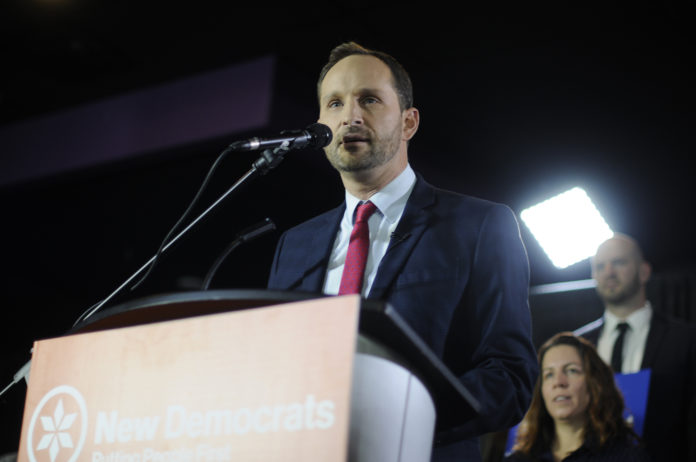
More than half of Saskatchewan residents say they are $200 away from being insolvent, according to the most recent MNP Consumer Debt Index, and Saskatchewan NDP leader Ryan Meili says that’s a sign the province needs to raise its minimum wage.
The index numbers were released earlier this week and show 52 per cent of respondents would not be able to pay an unexpected $200 bill without going into debt. That’s a two per cent increase since the last report in September.
Meili blamed Saskatchewan’s low minimum wage, the expanded PST formula, and a slow economy for the problem. He vowed that if elected this fall, his party would change all three.
“I wish I could say I was surprised (by the index results), but this is what people are telling us,” Meili said during an interview on Friday. “These numbers bear out the stories of every day folks, working people, small business owners, of the way our economy has slowed down.”
Saskatchewan’s minimum wage increased from $11.06/hr to $11.32/hr last September. The minimum wage has gone up 11 times since 2007, but is still the lowest in the country.
Meili said that’s one of many factors making it difficult for Saskatchewan residents to pay their bills, and he reaffirmed his party’s plans to raise the minimum wage to $15/hr if elected. He also promised to remove the PST from certain items, but didn’t go into details. He said the party would release a more specific plan in the coming months.
“Putting a tax on things that cost everyday people dollars every day makes it harder for people to decrease spending,” Meili said.
The provincial government expanded the PST in March 2017, applying it to items like children’s clothing, restaurant meals and insurance premiums. At the time, the government estimated that the tax on insurance premiums alone would generate an additional $157.9 million in revenue. They reversed the policy on insurance premiums nearly one year later after business owners argued it resulted in decreased job creation.
Meili admitted that some problems, like low commodity prices, were out of the government’s control. However, he argued that there are remedies, like favouring Saskatchewan companies when handing out government contracts.
“We should use our own companies and our own workers so that that money is circulating back into the economy, and we’re building people up at the same time as we’re making those investments in infrastructure,” he said.
SUBHEADLINE: Consumer Debt Index shows optimism mixed with some cause for concern
The MNP Consumer Debt Index shows Saskatchewan and Manitoba residents are optimistic about their future, but are still struggling to make ends meet.
The most recent numbers show roughly 29 per cent of residents in the two provinces won’t be able to meet their monthly financial obligations, while 45 per cent say they will only be able to do so if they take on additional debt. Both of those numbers are down since the last MNP index in September.
Despite those numbers, MNP licensed insolvency trustee Pamela Meger said Saskatchewan and Manitoba residents remain hopeful they can turn their financial situation around. However, she also said many feel they are in a worse place now than they were five years ago.
“Consumer debt is still a real problem for those in both provinces,” Meger said. “One of the biggest issues is many have allowed their debts to snowball and are now in a position where it is very difficult to get back on track financially.”
Meger added that residents having troubles with debt should change their spending habits, mindset and behavior. She also said they should seek help from a licensed professional.
“It’s important to not only pay off your creditors, but also change your mindset and behaviors,” she said. “That is the only way to break the cycle of debt.”
The MNP Consumer Debt Index measures both attitudes towards debt, and whether Canadians are able to pay their bills, endure unexpected expenses and absorb changes to interest rates.
The latest data was compiled by Canadian research company Ipsos between Dec. 4-9, 2019. Ipsos surveyed a sample of 2,000 Canadians ages 18 and over. Results are accurate within 2.5 percentage points, 19 times out of 20.

